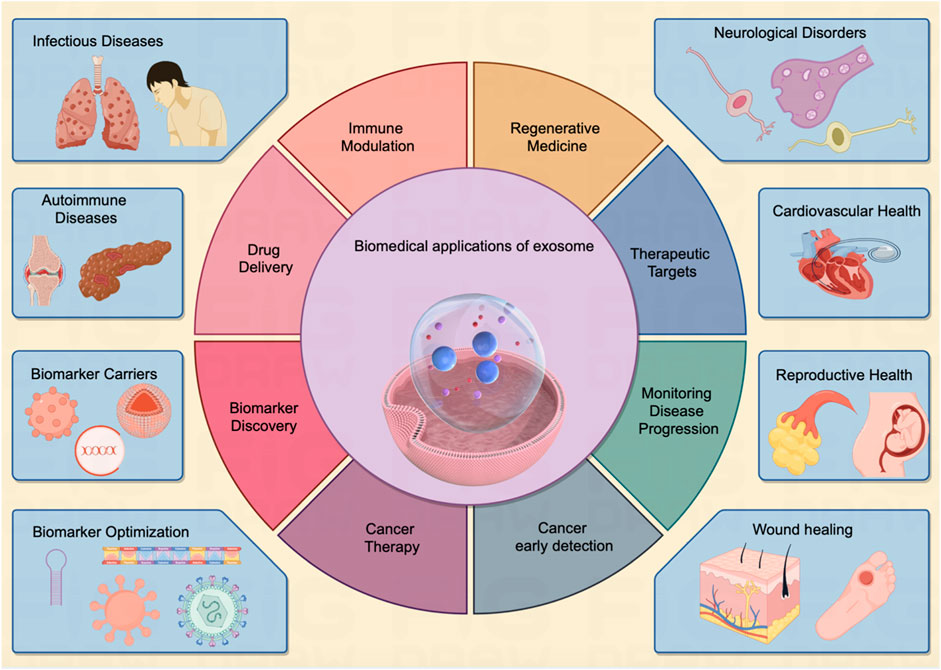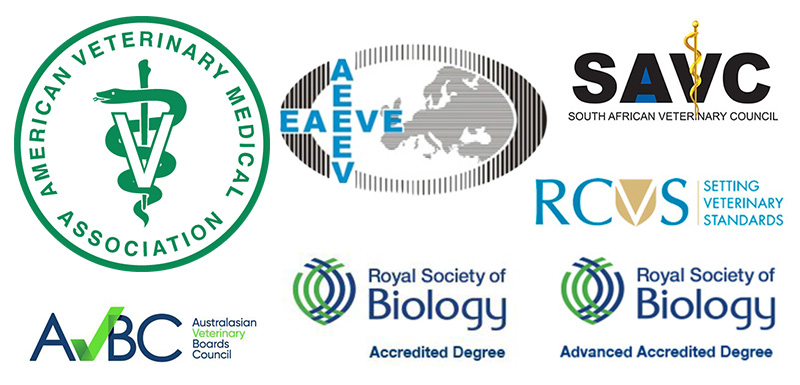Challenges to Public Health Governance and Sustainable Development Goal 3
A Case Study of Idaho’s Panhandle Health District
In the five northernmost counties of Idaho, a significant shift in public health governance is underway, presenting critical challenges to the achievement of Sustainable Development Goal 3 (SDG 3), which aims to ensure healthy lives and promote well-being for all at all ages. The Panhandle Health District (PHD), responsible for the health of approximately 280,000 residents, has become a focal point for a national debate on vaccine policy, individual liberty, and institutional trust. This report analyzes the ongoing events in Idaho, framing them within the context of the SDGs, particularly those concerning communicable disease control, access to essential medicines, and the strength of public institutions.
The conflict is spearheaded by figures such as Thomas Fletcher, the PHD Board of Health Chairman, who, along with other board members, advocates for policies aligned with the “Make American Healthy Again” (MAHA) movement. This movement questions established public health norms and prioritizes individual autonomy in health decisions. This ideological shift directly impacts progress towards several SDG targets.
- SDG Target 3.3 (End epidemics of communicable diseases): Declining vaccination rates, a direct result of the policy debates, increase the risk of outbreaks of preventable diseases like measles and pertussis, threatening to reverse decades of public health progress.
- SDG Target 16.6 (Develop effective, accountable and transparent institutions): The core of the debate is a profound lack of public trust in health institutions. Proponents of the new policies argue they are necessary to restore this trust, while opponents fear these actions further undermine the credibility and effectiveness of public health agencies.
The Debate Over Vaccine Policy and Informed Consent
Implications for SDG 3 (Good Health) and SDG 4 (Quality Education)
A central issue in the Panhandle Health District is a proposal to change how the risks and benefits of childhood vaccines are communicated to parents. In February, Chairman Fletcher initiated a discussion to create a new “informed consent” document, arguing that existing materials from the Centers for Disease Control and Prevention (CDC) do not adequately disclose potential harms. This debate touches upon the principles of both quality health services (SDG 3) and access to accurate information and education (SDG 4).
The differing perspectives on this policy proposal highlight a fundamental division in public health philosophy:
- The “Health Freedom” Position: Proponents like board member Duke Johnson argue that to achieve true informed consent and rebuild institutional trust (SDG 16), the PHD must provide its own materials detailing perceived vaccine risks more explicitly than CDC guidelines. They believe the public is not being given complete information to make decisions, a failure in health education.
- The Mainstream Public Health Position: Healthcare providers like nurse practitioner Marty Williams and former board member Peggy Cuvala counter that comprehensive informed consent is already standard practice. They express concern that the proposed document is biased, designed to stoke fear, and will lead to lower immunization rates, directly contravening the goals of SDG Target 3.8 (access to safe, effective, and affordable essential medicines and vaccines).
This conflict demonstrates a challenge to SDG Target 4.7, which includes ensuring learners acquire knowledge to promote sustainable development and sustainable lifestyles. The disagreement over what constitutes accurate, unbiased health information is a critical barrier to effective public health education.
Legislative Actions and Policy Shifts
State-Level Actions and their Relation to SDG 10 and SDG 16
The local debates in the Panhandle are reinforced by broader legislative changes within Idaho. In April, the state enacted the Idaho Medical Freedom Act, the first of its kind in the nation. This law restricts the ability of government agencies, schools, and businesses to require medical interventions like vaccination or mask-wearing.
While the law includes a carveout for existing school vaccine requirements, Idaho’s exemption policies are among the most lenient in the United States. This legislative environment has contributed to a significant decline in vaccination coverage, with Idaho reporting the highest rate of non-medical exemptions for kindergarteners in the nation. These developments have serious implications for health equity and institutional integrity.
- SDG 10 (Reduced Inequalities): Broad exemptions and falling vaccination rates risk creating significant health inequalities. Communities with lower immunity become highly vulnerable to outbreaks, leading to unequal health outcomes (Target 10.3) where the risk of contracting a preventable disease is determined by geographic and ideological divides.
- SDG 3 (Good Health and Well-being): In the 2023-2024 school year, MMR vaccination coverage for kindergarteners in the Panhandle Health District was approximately 65%, a level that infectious disease experts consider insufficient to maintain herd immunity, thereby increasing the risk of community-wide outbreaks.
Stakeholder Perspectives and the Future of Local Public Health
Navigating a Path Towards Achieving SDG 3 and SDG 16
The situation in Idaho illustrates a deep polarization in public health. The future direction of the Panhandle Health District and its ability to contribute to the Sustainable Development Goals will be determined by the resolution of these conflicting worldviews.
Key Stakeholder Groups:
- Health Freedom Advocates: Figures like Thomas Fletcher, Duke Johnson, and activist Rick Kirschner believe the public health system has violated public trust, particularly during the COVID-19 pandemic. They see their efforts to question vaccine schedules and mandates as a necessary step toward restoring accountability and transparency in governance, aligning with their interpretation of SDG 16.
- Public Health Professionals: Physicians like Ted Epperly and practitioners like Marty Williams view these developments with alarm. They warn that the dismantling of established, science-based public health measures will lead to a resurgence of dangerous diseases, directly undermining the core mission of SDG 3. They report that the constant questioning of standard medical care is taking an emotional toll on the health workforce, a challenge related to SDG Target 3.c.
As of July, a new appointment to the PHD board has reportedly secured a majority for members aligned with the MAHA movement. Chairman Fletcher has expressed his intent to continue pursuing policy changes. The ongoing events in Idaho serve as a critical case study of how localized political and ideological shifts can have profound consequences for national and global health objectives, demonstrating the fragility of the institutional trust required to achieve the Sustainable Development Goals.
SDGs Addressed in the Article
-
SDG 3: Good Health and Well-being
The article is fundamentally about public health, focusing on the debate over childhood vaccinations, the prevention of communicable diseases like measles and pertussis, and access to what different groups consider to be safe and effective healthcare. It discusses vaccination rates, the role of public health authorities (Panhandle Health District), and the potential health consequences of dropping immunization rates.
-
SDG 16: Peace, Justice and Strong Institutions
A central theme of the article is the erosion of public trust in health institutions (e.g., CDC, local health boards) and the subsequent efforts to reform them. The debate over “informed consent,” transparency, and accountability in public health governance directly relates to developing effective and transparent institutions. The article highlights the political polarization and conflict within these institutions, such as the Panhandle Health District board, as they grapple with their role and public perception.
Specific SDG Targets Identified
-
SDG 3: Good Health and Well-being
-
Target 3.3: End the epidemics of… communicable diseases
The article directly addresses this target by focusing on the prevention of vaccine-preventable communicable diseases. It mentions the historical success of vaccines in reducing diseases like polio and measles. It also highlights current risks, with a pediatrician noting he had “seen more cases of pertussis, a vaccine-preventable illness, than at any point in his 18-year career,” and a reference to a “measles outbreak emerging in Texas.” The decline in vaccination rates in Idaho is presented as a direct threat to controlling such diseases.
-
Target 3.8: Achieve universal health coverage, including… access to safe, effective, quality and affordable essential medicines and vaccines for all
The core debate in the article is about the safety and effectiveness of vaccines. While the Panhandle Health District provides routine childhood immunizations, the “health freedom” movement questions their safety and the quality of information provided. The push by board members Fletcher and Johnson to create their own informational documents is framed as an effort to ensure parents can make an “informed decision” about vaccines, which they believe is not currently possible with CDC materials. This speaks directly to the “safe, effective, quality” aspect of this target.
-
Target 3.b: Support the research and development of vaccines and medicines… provide access to affordable essential medicines and vaccines
This target is relevant as the article details a profound skepticism towards the scientific consensus and research backing childhood vaccines. Fletcher’s questioning of the evidence behind the childhood vaccination schedule and his belief that public health leaders “lied to us” about vaccine safety represents a direct challenge to the established processes of vaccine research, approval, and recommendation that this target supports.
-
-
SDG 16: Peace, Justice and Strong Institutions
-
Target 16.6: Develop effective, accountable and transparent institutions at all levels
This target is central to the article’s narrative. The loss of public trust is a recurring theme. Fletcher states, “As Chairman of Panhandle Health, I feel a certain urge to restore the trust — public trust in public health — because that trust has been violated.” The entire debate over creating a new “informed consent” document is presented as a mechanism to increase transparency and accountability, even as opponents worry it would be biased. The article describes a fundamental disagreement on what makes an institution “effective” and “trustworthy.”
-
Target 16.7: Ensure responsive, inclusive, participatory and representative decision-making at all levels
The article provides a clear example of this target in action, and its challenges. The Panhandle Health District board meetings are described as “standing-room only,” with lengthy public comment periods where community members, pediatricians, and activists participate. The appointment of board members by elected county commissioners is another facet of this process. However, the deep divisions on the board and in the community show the difficulty of achieving responsive and representative decisions when there is no shared consensus on facts or goals.
-
Indicators for Measuring Progress
The article mentions or implies several indicators that can be used to measure progress towards the identified targets:
-
Vaccination Coverage Rates (Indicator for Target 3.3 & 3.8)
The article provides specific quantitative data that serves as a direct indicator of vaccination coverage. It states that in the Panhandle Health District, “fewer than two-thirds” of kindergarteners are up-to-date on shots. It also reports that for the 2023-2024 school year, “a bit more than 65 percent of kindergarten families in the Panhandle Health District furnished records showing they’ve received the MMR vaccine and five other common immunizations, down from just over 69 percent in the 2019-2020 school year.” This data directly measures the proportion of the population covered by vaccines.
-
Rate of Non-Medical Exemptions (Indicator for Target 3.3 & 3.8)
As a corollary to vaccination rates, the article provides a specific statistic on vaccine refusal: “In the 2024-2025 school year, more than 15 percent of kindergarten parents in the state claimed a non-medical exemption, the highest percentage, by far, of the states that reported data.” This is a clear indicator of public resistance to vaccination programs.
-
Incidence of Vaccine-Preventable Diseases (Indicator for Target 3.3)
The article implies this indicator through anecdotal but expert testimony. A local nurse practitioner, Marty Williams, noted that “he had seen more cases of pertussis, a vaccine-preventable illness, than at any point in his 18-year career.” This suggests an increase in the incidence of a specific communicable disease, which can be tracked as a formal indicator of public health outcomes.
-
Public Trust in Institutions (Indicator for Target 16.6)
While not providing a specific survey percentage, the article repeatedly references this as a critical, albeit qualitative, indicator. It notes that “Polls suggest that trust in health authorities is politically polarized — and perhaps historically low.” The entire conflict is framed around a “lack of trust in established medicine,” and a visioning session for the health district identified “TRUST” in all-caps as a key opportunity, signifying its importance as a measure of institutional performance.
Summary Table of SDGs, Targets, and Indicators
| SDGs | Targets | Indicators Identified in the Article |
|---|---|---|
| SDG 3: Good Health and Well-being |
Target 3.3: End the epidemics of… communicable diseases.
Target 3.8: Achieve universal health coverage, including… access to safe, effective, quality and affordable essential medicines and vaccines for all. |
|
| SDG 16: Peace, Justice and Strong Institutions |
Target 16.6: Develop effective, accountable and transparent institutions at all levels.
Target 16.7: Ensure responsive, inclusive, participatory and representative decision-making at all levels. |
|
Source: undark.org







